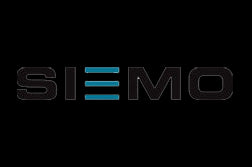When it comes to working in construction or any environment where dust is a constant companion, having the right small tool vacuum is not just a convenience but a necessity. In the UK, the minimum legal requirement for construction sites is an M Class vacuum, and in some cases, an H Class vacuum may be required. In this guide, we'll help you make an informed decision when selecting a small tool vacuum for your construction needs, with a focus on the MAXVAC Dura vacuum range and the Sprintus CraftiX range.
The Dangers of Dust
Dust generated in construction and similar industries can be more than just a nuisance; it can be a silent killer. Inadequate dust control can lead to serious health issues. The dust particles can remain suspended in the air for hours, making it easy for them to enter your lungs. Once inhaled, these particles can settle in the inner parts of your lungs and remain there indefinitely. This prolonged exposure to dust is a leading cause of respiratory diseases and contributes to many deaths worldwide each year.
The Health Risks
Construction dust is not merely a temporary irritation; it can have lasting and devastating health effects. The Health and Safety Executive (HSE) in the UK warns that "Construction dust is not just a nuisance - it can seriously damage your health. Regularly breathing in these dusts over a long time can cause life-changing lung diseases."
The most common health risks associated with inhaling construction dust include:
Silicosis: A chronic and irreversible lung disease caused by inhaling crystalline silica dust. Silicosis can lead to severe breathing difficulties and, in severe cases, death.
Asbestosis: Exposure to asbestos dust can cause asbestosis, a condition that leads to scarring of the lung tissue and a significant reduction in lung function.
Lung Cancer: Prolonged exposure to certain types of dust, such as asbestos and certain metal dusts, can increase the risk of lung cancer.
Chronic Obstructive Pulmonary Disease (COPD): Construction dust can contribute to the development of COPD, a group of lung conditions that includes chronic bronchitis and emphysema.
Protecting Yourself and Your Workforce
Recognizing the severe health risks associated with dust exposure, main contractors and regulatory bodies like the HSE are taking this issue very seriously. It's not just about individual health; organizations have a legal and moral responsibility to protect their workforce from the dangers of dust.
Using outdated or inadequate equipment for dust control can have severe legal implications. Fines, legal actions, and damage to a company's reputation are potential consequences of failing to adhere to dust control regulations.
Choosing the Right Small Tool Vacuum
Now that you understand the importance of effective dust control, let's explore the factors to consider when choosing the right small tool vacuum for construction and power tool connection, with a special emphasis on the MAXVAC Dura vacuum range and the Sprintus CraftiX range.
-
Dust Class: Understanding M Class and H Class
In the realm of dust extraction, it's crucial to be familiar with different dust classes. M Class vacuums are the minimum legal requirement for construction sites in the UK. They are designed to handle dust with medium risk to health, including materials like wood, concrete, and plaster. These vacuums capture particles with a Minimum Separation Efficiency of 99.9%.
However, there are scenarios where an H Class vacuum is essential. H Class vacuums are suitable for high-risk dust situations, such as asbestos removal and handling hazardous materials. They offer the highest level of filtration, with a Minimum Separation Efficiency of 99.995%, making them indispensable for protecting against the most harmful dust particles.
-
Filtration: Keeping the Air Clean
Both the MAXVAC Dura vacuum range and the Sprintus CraftiX range prioritize effective filtration to ensure that the air remains clean and safe to breathe. MAXVAC Dura vacuums come with advanced filtration systems that include manual and SMARTclean filter cleaning options. The SMARTclean feature optimizes filter performance by automatically cleaning the filter, minimizing downtime and maintaining peak suction power. Sprintus models, on the other hand, employ a reverse air jet system for filter cleaning, which not only keeps the filter clean but also operates silently, ensuring a quiet and productive work environment.
-
Mobility: Manoeuvring with Ease
Mobility is a crucial factor when it comes to small tool vacuums, especially on dynamic construction sites. MAXVAC Dura vacuums are renowned for their lightweight design, making them among the lightest on the market. This feature allows you to move the vacuum effortlessly, ensuring that you can keep up with the demands of the job. In contrast, Sprintus CraftiX vacuums offer additional mobility-enhancing features, such as tool box attachment points. These attachments provide convenient storage for essential tools, reducing the need for additional trips to the toolbox and streamlining your workflow.
-
Accessories: Equipped for Versatility
Accessories can significantly enhance the versatility of a small tool vacuum. MAXVAC Dura vacuums come with a complete accessories kit, ensuring that you have the right tools for various tasks. While the Sprintus CraftiX range may not include a complete accessories kit, it's worth noting that this is a common practice in the industry. Both models are compatible with a wide range of attachments and hoses, giving you the flexibility to adapt to different tools and access hard-to-reach areas, making them suitable choices for your construction needs.
Conclusion
In conclusion, when selecting a small tool vacuum for construction and power tool connection, you have excellent options in the MAXVAC Dura vacuum range and the Sprintus CraftiX range. Each of these ranges offers unique features and advantages to cater to your specific requirements. MAXVAC Dura vacuums excel in lightweight design and offer SMARTclean filtration, while Sprintus CraftiX vacuums provide a reverse air jet filter cleaning system and additional mobility-enhancing features. Whether you prioritize mobility, filtration, or accessories, both models are designed to provide reliable, efficient, and safe dust extraction, ensuring a positive impact on your health and productivity on the job site.
For those in need of more industrial solutions, explore the MAXVAC Supra range here, which offers unparalleled performance and durability in demanding environments.














